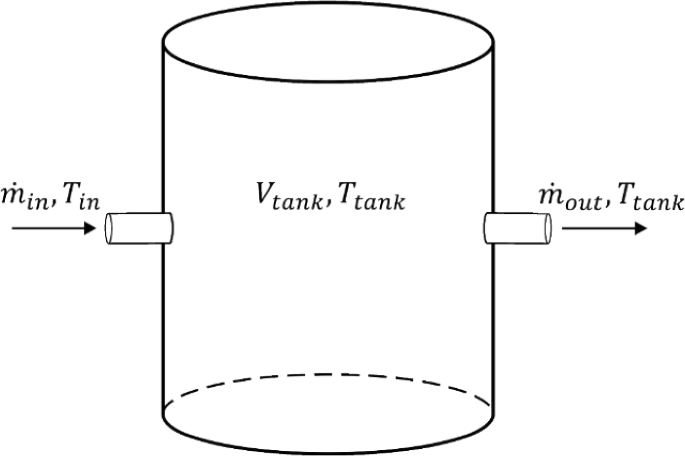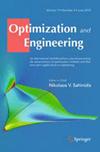基于动态规划的蓄热级联热泵系统最优控制方法
IF 1.7
3区 工程技术
Q2 ENGINEERING, MULTIDISCIPLINARY
引用次数: 0
摘要
住宅供暖和制冷部门已经越来越电气化,主要使用电驱动热泵(HP)与热/电储能系统相结合。虽然这些发展有助于增加可再生能源和低碳能源在该领域的份额,但要充分利用该技术的潜力,就需要对这些系统进行智能控制,以预测未来可再生能源的可用性和相应的惠普系统性能。然而,以一种适合智能控制的方式对具有复杂内部动力学特征的系统建模是具有挑战性的。模型需要足够复杂,以准确地捕捉系统的非线性和复杂性,同时足够快,以便在适当的计算时间内彻底搜索解决方案空间。动态规划(DP)是一种很有前途的智能控制方法,因为它结合了使用复杂非线性模型的能力,同时也是一种穷举搜索算法,确保找到全局最优解。本文提出了一个创新的建模框架,该框架需要HP变电站主要组件(即HP和热能储存- tes)的降阶模型(ROM),以适合DP使用的方式进行阐述;这些因素已经被设计成包括影响系统性能的重要物理操作限制(例如,高压压缩机变速,性能- cop -依赖于室外和分布温度的非线性系数),同时最小化优化器需要处理的状态变量(即TES温度,高压热电容量)的数量。在一个典型HP系统的应用中,我们的系统模型与详细的TRNSYS对应模型进行了非常好的比较,作为参考基础真理。该系统通过动态规划优化方法实现了显著的成本节约,与传统的基于规则的控制相比,功耗降低了13%。本文章由计算机程序翻译,如有差异,请以英文原文为准。

A dynamic programming based method for optimal control of a cascaded heat pump system with thermal energy storage
Abstract The residential heating and cooling sector has been increasingly electrifying, predominantly using electrically driven heat pumps (HP) in combination with thermal/electrical energy storage systems. While these developments contribute to increased renewable and low carbon energy shares in the sector, exploiting the full potential of the technology requires a smart control of these systems that can account for predicted renewable energy availability in the future and the corresponding HP system performance. However, modelling a system featuring complex internal dynamics, in a way that is suitable for smart control, is challenging. Models need to be sophisticated enough to accurately capture the system's nonlinearities and intricacies while at the same time fast enough to enable a thorough search of the solutions space, in suitable computational time. Dynamic programming (DP) is a promising approach to smart controls, as it combines the ability to use complex, non-linear models while being an exhaustive search algorithm, guaranteeing that the global optimum is found. This paper presents an innovative modelling framework that entails reduced order models (ROM) of an HP substation's main components (i.e., HP and thermal energy storage—TES), elaborated in a fashion suitable for use in DP; these have been shaped as to include significant physical operating constraints (e.g., HP compressor variable speed, non-linear coefficient of performance—COP—dependency on outdoor and distribution temperature) affecting the system performance, while at the same time minimising the amount of state variables (i.e., TES temperatures, HP thermal and electric capacity) the optimizer needs to handle. In an application to an exemplary HP system, our system models compare remarkably well to detailed TRNSYS counterparts, used as a reference ground truth. The system achieves significant cost-saving enabled by the dynamic programming optimization approach, facilitating a 13% decrease in power consumption compared to conventional rule-based control.
求助全文
通过发布文献求助,成功后即可免费获取论文全文。
去求助
来源期刊

Optimization and Engineering
工程技术-工程:综合
CiteScore
4.80
自引率
14.30%
发文量
73
审稿时长
>12 weeks
期刊介绍:
Optimization and Engineering is a multidisciplinary journal; its primary goal is to promote the application of optimization methods in the general area of engineering sciences. We expect submissions to OPTE not only to make a significant optimization contribution but also to impact a specific engineering application.
Topics of Interest:
-Optimization: All methods and algorithms of mathematical optimization, including blackbox and derivative-free optimization, continuous optimization, discrete optimization, global optimization, linear and conic optimization, multiobjective optimization, PDE-constrained optimization & control, and stochastic optimization. Numerical and implementation issues, optimization software, benchmarking, and case studies.
-Engineering Sciences: Aerospace engineering, biomedical engineering, chemical & process engineering, civil, environmental, & architectural engineering, electrical engineering, financial engineering, geosciences, healthcare engineering, industrial & systems engineering, mechanical engineering & MDO, and robotics.
 求助内容:
求助内容: 应助结果提醒方式:
应助结果提醒方式:


